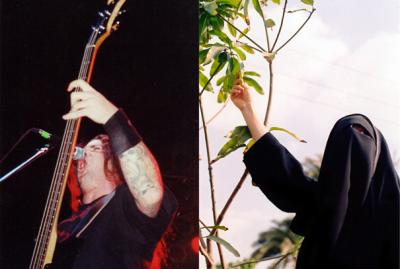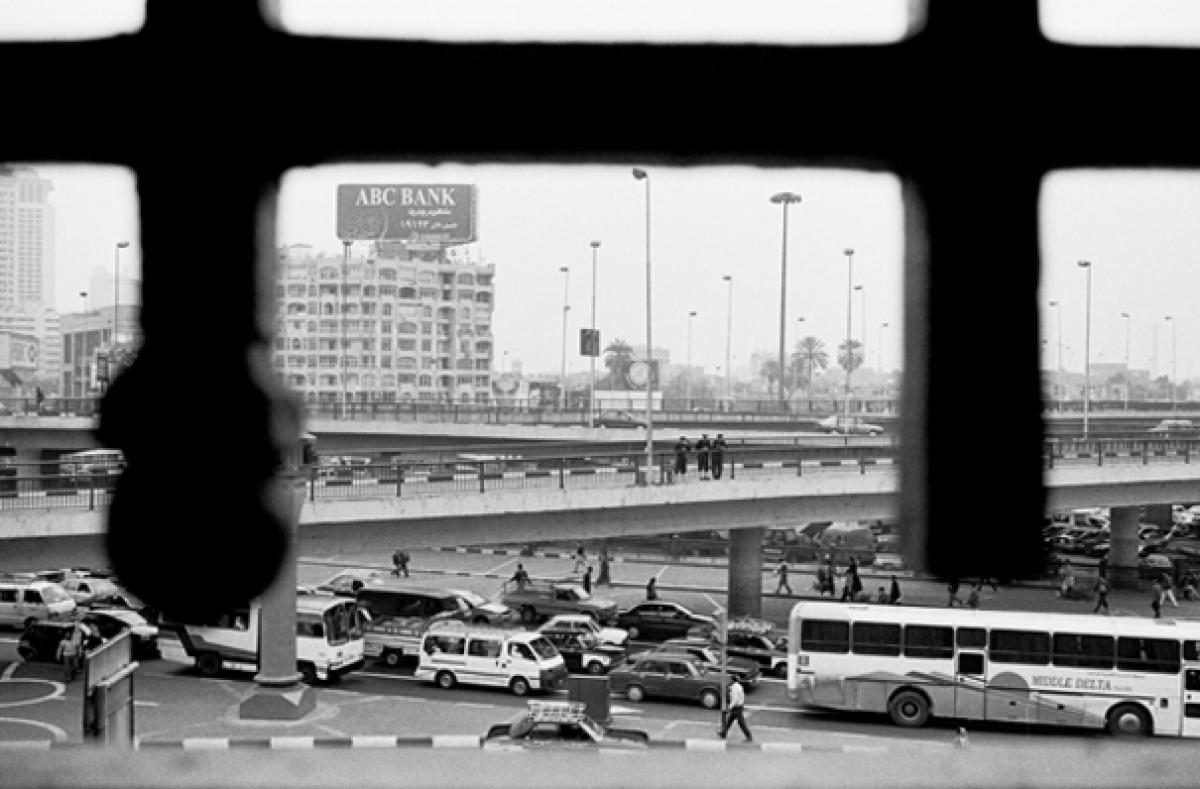
From Metal to Twitter
Multimedia artist, horror activist and metal musician Nader Sadek looks at the conflicts between metal music, arts and politics in Egypt, past and present.
The people of Egypt have finally revolted against the oppressive 30-year rule of Hosni Mubarak. Their voices, long shut out of the corridors of power, now resonate around the world (where news of them is not censored, of course). For the last two decades, election time in Egypt has amounted to a national farce that plays out an empty simulacrum of the democratic process. Corrupt leaders enforce the economic domination of a tiny elite of extremely affluent people who control finance, industry, tourism, and telecommunications.
Simultaneously, Mubarak receives billions of dollars in military aid for toeing the American government line: maintaining peace with Israel, exporting natural gas at an extremely low price, and refusing to create a safe hub for Palestinian refugees. With emergency laws in effect since 1981, Mubarak has created a no-democracy solution justified by trumped-up fears of terrorism. Basic human rights are stripped away and political dissenters can be imprisoned and tortured without recourse to legal representation.
The uprising of the Tunisian people against their government gave hope and motivation for the people of Egypt to rise against this abject situation. Among the many changes in the offing, the revolution promises to rejuvenate and inspire the moribund Egyptian art world.
In Egypt, art is controlled by the government. It is extremely difficult for an artist to create work controversial enough to be broadly relevant across the deep socio-economic divides of the country. Contemporary art galleries have thus occupied a dispiriting space between subtlety and irrelevance. Catering to Western art collectors, galleries have even cynically tried to fabricate Egyptian Basquiats out of media-friendly artistic ingenues.

The biggest conflict between the realm of art and the government in Egypt transpired in the mid-to-late 1990s and was known across the Middle East as «the days of Satanism». Thousands of heavy metal fans had formed a subculture that was perceived, and treated, as a threat to the Egyptian government. Long hair, loud and incomprehensible music, and a rebellious attitude echoed society's repressed demand for self-expression and liberation. Thousands of metal fans, from rich and poor families alike, were arrested and faced the possibility of execution under charges of apostasy, as converting from Islam to another religion (Satan worship!) is punishable by death. The metal-fans-cum-prisoners were finally freed after approximately three months. One of the victims of this event joined the growing community of bloggers committed to exposing government corruption and police brutality. While his blogs have been read internationally, more importantly he has helped build local networks intent upon raising awareness and mobilizing the dissent visible in the streets of Cairo today.
The present moment in Egypt holds the potential to open up a new expressive space for political artists. Several months ago I discontinued work on a bust of Mubarak with bruises on the back of his neck. Because a slap on the neck in Egypt represents a supreme insult, this work would have flouted the prohibition against insulting the president. I thought that it was far too dangerous and could put friends and family — not to mention myself when I return to Egypt — in jeopardy. Encouraged and emboldened by the protesters in Egypt, I have returned to the piece. I hope it will join the chants, posters, Twitter feeds, documentaries-in-the-making, and political cartoons as a testament to the bravery and the aspirations of the Egyptian people.
Info: The images above are made by Nader Sadek. They are from the 2007 series Faceless which was censored in Cairo, Egypt.
Biography
Published on February 17, 2011
Last updated on April 10, 2024
Topics
From political music in the GDR, the trouble of punk musicians in China and the dangerous life of kurdish folk singers in Turkey.
From Muslim taqwacore to how the rave scene in Athens counters the financial crisis.
About Tunisian rappers risking their life to criticize politics and musicians affirming 21st century misery in order to push it into its dissolution.
From priests claiming to be able to shapeshift into an animal to Irish folk musicians attempting to unify Protestants and Catholics.


